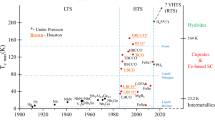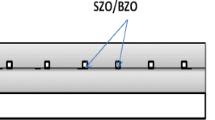Abstract
In a seminal work, Gozar et al. reported on the high-temperature interface superconductivity in bilayers of insulating La2CuO4 and metallic La2−xSrxCuO4 (x=0.45). An interesting question to address is how general and robust this interface superconductivity is. In the past, the cuprate bilayers were grown in a unique atomic-layer molecular beam epitaxy system, with a Sr doping range of x≤0.47, and the atomically flat interface was thought to be indispensable. Here, we have fabricated bilayers of La2CuO4 and La2−xSrxCuO4 by pulsed laser deposition. We have tried to extend the nominal doping range of Sr from the previous maximum of 0.47 to the present 1.70 (the nominal Sr content in the targets). X-ray diffraction result indicates that our La2−xSrxCuO4 films with x≤0.60 have very high crystalline quality; but the film crystalline structure degrades gradually with further increasing x, and finally the structure is fully lost when x reaches 1.40 and higher. Although the film quality scatters dramatically, our experiments show that there exists superconductivity for bilayers in nearly the entire over-doped Sr range, except for a non-superconducting region at x∼0.80. These observations demonstrate that the interface superconductivity in copper oxides is very general and robust.
摘要
在2008年发表的一篇经典工作中, Gozar等人报道了由绝缘 性的La2CuO4和金属性的La1.55Sr0.45CuO4双层薄膜构成的体系存在 界面超导. 一个重要的有待回答的问题是该界面超导是否强健以 及具有普遍性. 在Gozar等人的工作中, 铜氧化物双层结构是利用 特制的氧化物分子束外延设备生长的, 最大Sr掺杂量仅为0.47. 在 本工作中, 我们首次利用脉冲激光沉积法制备了铜氧化物双层结 构, 并重复出了上述界面超导工作. 在此基础上, 我们将Sr的掺杂 范围大幅扩展到1.70, 结果表明在由La2CuO4 和过掺杂的 La2−xSrxCuO4构成的双层结构中界面超导非常强健和普遍. 值得一 提的是, 我们发现在x>0.8范围内存在一个新的界面超导区间.
Similar content being viewed by others
References
Gozar A, Logvenov G, Kourkoutis LF, et al. High-temperature interface superconductivity between metallic and insulating copper oxides. Nature, 2008, 455: 782–785
Reyren N, Thiel S, Caviglia AD, et al. Superconducting interfaces between insulating oxides. Science, 2007, 317: 1196–1199
Salvato M, Tieri G, Balestrino G, et al. Anisotropic properties of a single superconducting CaCuO2/SrTiO3 interface. Supercond Sci Technol, 2015, 28: 095012
Meir B, Gorol S, Kopp T, et al. Observation of two-dimensional superconductivity in bilayers of BaBiO3 and BaPbO3. Phys Rev B, 2017, 96: 100507
Baiutti F, Gregori G, Suyolcu YE, et al. High-temperature superconductivity at the lanthanum cuprate/lanthanum-strontium nickelate interface. Nanoscale, 2018, 10: 8712–8720
Suyolcu YE, Wang Y, Baiutti F, et al. Dopant size effects on novel functionalities: High-temperature interfacial superconductivity. Sci Rep, 2017, 7: 453
Logvenov G, Gozar A, Bozovic I. High-temperature superconductivity in a single copper-oxygen plane. Science, 2009, 326: 699–702
Koren G, Millo O. Enhancement of the superconducting transition temperature of La2−xSrxCuO4 and La1.875Ba0.125CuO4 bilayers: Bi-layer and reference film prepared on the same wafer. Phys Rev B, 2010, 81: 134516
Wang QY, Li Z, Zhang WH, et al. Interface-induced high-temperature superconductivity in single unit-cell FeSe films on SrTiO3. Chin Phys Lett, 2012, 29: 037402
Smadici S, Lee JCT, Wang S, et al. Superconducting transition at 38 K in insulating-overdoped La2CuO4−La1.64Sr0.36CuO4 super-lattices: evidence for interface electronic redistribution from resonant soft X-ray scattering. Phys Rev Lett, 2009, 102: 107004
Wu J, Pelleg O, Logvenov G, et al. Anomalous independence of interface superconductivity from carrier density. Nat Mater, 2013, 12: 877–881
Hwang HY, Iwasa Y, Kawasaki M, et al. Emergent phenomena at oxide interfaces. Nat Mater, 2012, 11: 103–113
Sato H, Tsukada A, Naito M, et al. La2−xSrxCuOy epitaxial thin films (x=0 to 2): Structure, strain, and superconductivity. Phys Rev B, 2000, 61: 12447–12456
Johnson AM, Burquest FJ, Larsen HM, et al. Stabilization of Sr-rich ultrathin epitaxial films of La2−xSrxCuO4. Thin Solid Films, 2018, 649: 167–170
Sen K, Marsik P, Das S, et al. Superconductivity and charge-carrier localization in ultrathin La1.85Sr0.15CuO4/La2CuO4 bilayers. Phys Rev B, 2017, 95: 214506
Torrance JB, Tokura Y, Nazzal AI, et al. Anomalous disappearance of high-T c superconductivity at high hole concentration in metallic La2−xSrxCuO4. Phys Rev Lett, 1988, 61: 1127–1130
Willmott PR, Huber JR. Pulsed laser vaporization and deposition. Rev Mod Phys, 2000, 72: 315–328
Bozovic I, Logvenov G, Belca I, et al. Epitaxial strain and superconductivity in La2−xSrxCuO4 thin films. Phys Rev Lett, 2002, 89: 107001
Uchida S, Ido T, Takagi H, et al. Optical spectra of La2−xSrxCuO4: Effect of carrier doping on the electronic structure of the CuO2 plane. Phys Rev B, 1991, 43: 7942–7954
Pavlov DP, Zagidullin RR, Mukhortov VM, et al. Fabrication of high-temperature quasi-two-dimensional superconductors at the interface of a ferroelectric Ba0.8Sr0.2TiO3 film and an insulating parent compound of La2CuO4. Phys Rev Lett, 2019, 122: 237001
Wu J, Bollinger AT, He X, et al. Spontaneous breaking of rotational symmetry in copper oxide superconductors. Nature, 2017, 547: 432–435
Ino A, Mizokawa T, Fujimori A, et al. Chemical potential shift in overdoped and underdoped La2−xSrxCuO4. Phys Rev Lett, 1997, 79: 2101–2104
Jin K, Bach P, Zhang XH, et al. Anomalous enhancement of the superconducting transition temperature of electron-doped La2−xCexCuO4 and Pr2−xCexCuO4 cuprate heterostructures. Phys Rev B, 2011, 83: 060511
Zhong Y, Wang Y, Han S, et al. Nodeless pairing in superconducting copper-oxide monolayer films on Bi2Sr2CaCu2O8+δ. Sci Bull, 2016, 61: 1239–1247
Li WM, Zhao JF, Cao LP, et al. Superconductivity in a unique type of copper oxide. Proc Natl Acad Sci USA, 2019, 116: 12156–12160
Jiang K, Wu X, Hu J, et al. Nodeless high-T c superconductivity in the highly overdoped CuO2 monolayer. Phys Rev Lett, 2018, 121: 227002
Liu K, Lu ZY, Xiang T. Electronic structures of quasi-one-dimensional cuprate superconductors Ba2CuO3+δ. Phys Rev Mater, 2019, 3: 044802
Acknowledgements
This work was supported by the National Key Research and Development Program of Ministry of Science and Technology of China (2017YFA0303002, 2016YFA0300204, and 2016YFA0300701), and the Fundamental Research Funds for the Central Universities.
Author information
Authors and Affiliations
Contributions
Deng JH, Ren TS, and Ju LL performed the sample fabrication, transport measurements, and AFM characterization; Zhang HR, Sun JR, and Shen BG performed XRD measurements; Xie YW designed the experiment and wrote the manuscript. All authors contributed to data analysis and discussion.
Corresponding author
Additional information
Conflict of interest
The authors declare that they have no conflict of interest.
Supplementary information
The data of XRR and AFM, and an example for defining “T”, are available in the online version of the paper.
Jia-hao Deng is currently a master’s degree candidate at the Department of Physics Zhejiang University. He received his bachelor degree from Nanchang University in 2017. His research is focused on the interface superconductivity in La2−xSrxCuO4.
Tian-shuang Ren is currently a PhD candidate at the Department of Physics Zhejiang University. He received his bachelor degree (majored in physics) from Lanzhou University in 2017. His PhD research focuses on the growth and characterization of iridates and high-Tc cuprates.
Yan-wu Xie is currently a professor at the Department of Physics Zhejiang University. He received his PhD in physics from the Institute of Physics, CAS, in 2007. From 2007 to 2009, he was an associate professor at Yanshan University. From 2009 to 2011, he was a JSPS postdoctoral fellow at Tokyo University. From 2011 to 2015, he was a postdoctoral scholar and later a staff research associate at Stanford University. He joined Zhejiang University in June 2015. His research interests include superconductivity and electron gas at interfaces of complex oxides.
Rights and permissions
About this article
Cite this article
Den, Jh., Ren, Ts., Ju, Ll. et al. High-temperature interface superconductivity in bilayer copper oxide films by pulsed laser deposition. Sci. China Mater. 63, 128–135 (2020). https://doi.org/10.1007/s40843-019-9500-1
Received:
Accepted:
Published:
Issue Date:
DOI: https://doi.org/10.1007/s40843-019-9500-1




